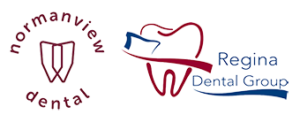Some things should not be do it yourself (DIY), and dentistry is one of those things. With accessibility and affordability being the main appeal of at-home or direct-to-consumer dentistry, we understand why these alternatives seem like a good idea. However, not all smiles are created equal, and some things should be left to the professionals. We have compiled a list of the top dental DIY don’ts that can do more harm than good, in the short and long run, and will explain why visiting your local dentist may be a better, more affordable, option for you.
Filing Teeth with Nail Files
This DIY don’t is painful enough to read, but believe it or not, people do try to file their own teeth with at-home supplies. Dental professionals advise patients not to try this, ever! Why, you may ask? Well, the act of filing teeth is not as easy as it sounds and requires proper safety, tools, and technique. Patients risk damaging their enamel and tooth structure by filing off too much of their tooth. This can lead to misshaped teeth, tooth sensitivity and rapid tooth wear.
Whitening Teeth with Citrus Rinds
This may seem like an ingenious way to leave no part of your fruit unused, but this method can quickly lead to long term harm. It is often believed that citrus fruit can naturally whiten teeth and freshen breath, and while this may appear to be the case, this is not necessarily true. Citrus fruit is extremely acidic and when your teeth are exposed to acids the hard, outer layer of your teeth, known as enamel, breaks down. The “results” you may see after using citrus to whiten your teeth is actually a consequence of stripping your tooth enamel, which can cause decay and make future staining easier.
DIY Aligners
As direct-to-consumer orthodontics becomes more prevalent, dental professionals and consumers alike are realizing the truth about DIY aligners. With cost and convenience being the two main selling points, the number one reason for seeking out aligner treatment in the first place (to straighten teeth predictably and comfortably) is often overlooked. In-person consultations with real doctors and dental professionals are important, especially when seeking out serious dental work. Tooth and gum health, the severity of misaligned teeth and bites, are all factors that play into determining whether someone is a potential candidate for aligners or braces. Numerous orthodontists have even reported seeing people with gum disease or tooth decay using DIY aligners, which not only jeopardizes their oral and overall health, but confirms that at-home or online programs aren’t worth the ‘discount’.
At-Home Extractions
Affordability aside, performing an at-home tooth extraction without the proper training and equipment can be very dangerous, and can even cause more pain, damage, and financial stress in the long run. Although pulling a tooth may seem rather simple, the risk for infection, breaking teeth, severely damaging bone and tearing through mouth tissues is very high. Toothaches are bothersome, we get it, but if the pain does not subside on its own it usually means that there is a much deeper issue at play such as infection, decay, an abscess, etc. Remember, while it may be appropriate to gently remove a loose baby tooth, you should never pull an adult tooth.
Brushing Teeth with Baking Soda
Baking soda, a common fixture in every kitchen for baking, cooking and household cleaning, has also gained popularity as an alternative for brushing teeth. Although baking soda can be part an effective part of a toothpaste’s formula, homemade baking soda toothpaste lacks the fluoride necessary to prevent cavities and tooth decay. For patients with orthodontic appliances, baking soda can even soften the dental glues used to hold your braces or retainers in place. Toothpastes with baking soda in them are different because the baking soda granules have been finely ground to ensure that the paste is gentle enough for teeth, and with added fluoride in the toothpaste formula can fight cavities, which baking soda alone cannot do.
Remember, dentistry is not expensive, neglect is. Although some of the dental DIYs listed above may seem clever and cost-effective at first glance, the risks involved are not worth it in the long run. You only have one smile and you should treat it as such. For more information on the various dental services we offer, please click here.
